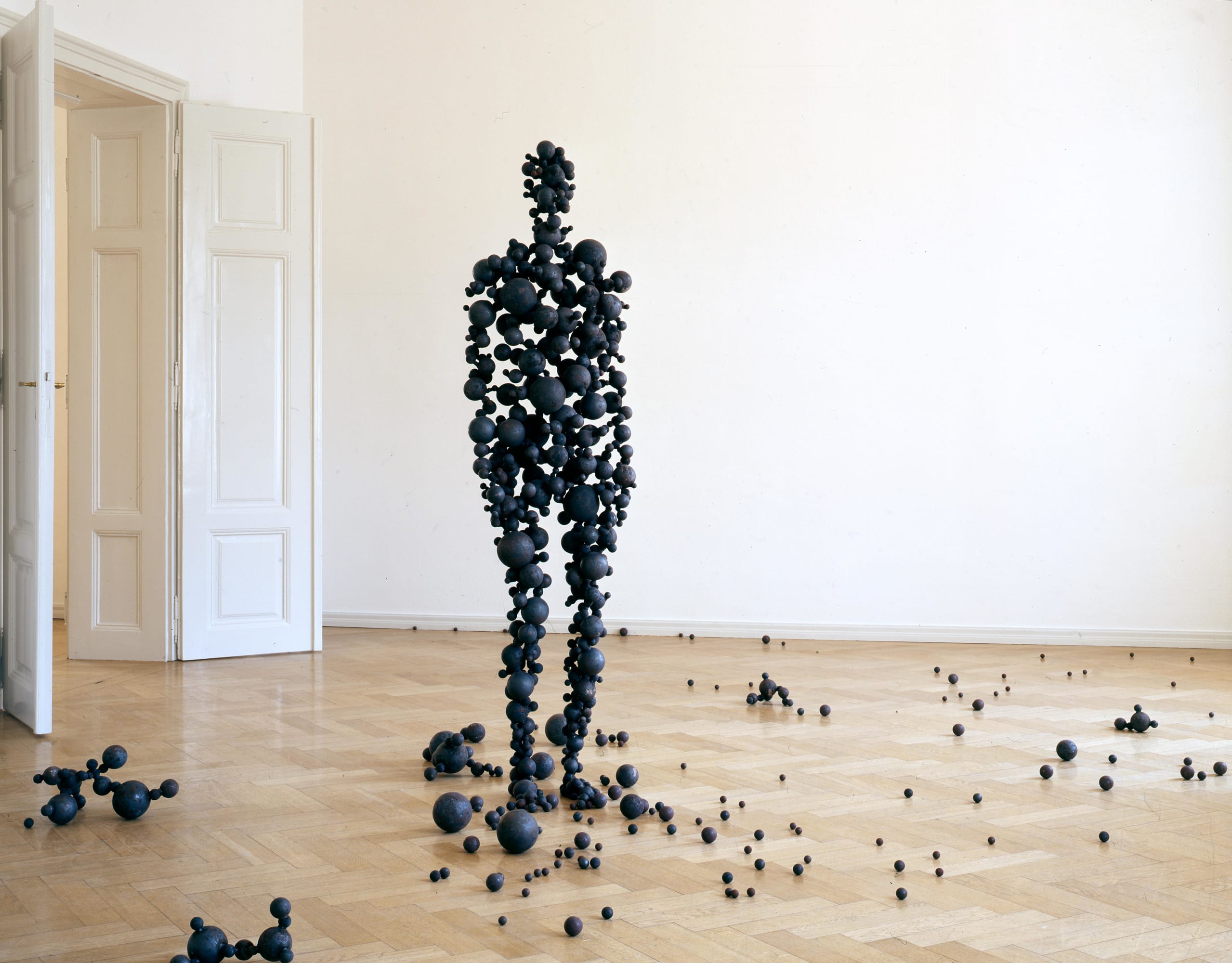"We look for beauty and a certain kind of likeness. My work doesn't give likeness, or beauty in any understood way. lt really presents the body as a condition, not as a given identity." —Antony Gormley, 1996
"lt requires a moment of stillness, of concentration. I am trying to make sculpture from the inside, by using my body as the instrument and the material. The form comes from the concentration" — Antony Gormley, 2000
We are pleased to announce a project in which one of Britain's leading sculptors will meet one of the great curators of our time: Norman Rosenthal, Director of London's Royal Academy of Arts, is arranging a presentation of Antony Gormley's latest sculptures for the Thaddaeus Ropac Gallery in Salzburg.
Gormley, born in London in 1950, first studied art history, archaeology and anthropology at Trinity College in Cambridge in the 1970s. After a three-year journey to the Orient, he trained as a sculptor at London's Central School of Art, the Goldsmiths School of Art and the Slade School of Fine Art. In 1981 the London Whitechapel Art Gallery and the Serpentine Gallery showed Antony Gormley's first two solo exhibitions. Since then, his works have been continuously exhibited worldwide and are now in numerous museums and public collections. In 1994 Antony Gormley was awarded the prestigious Turner Prize.
At the heart of Antony Gormley's work is the strategy of choosing his own body as the starting point for his artistic visual language: in Gormley's work, the body is not only the subject of his work, but is also the medium, material and tool in equal measure.
One of his most popular works is the block of lead body cases (since the mid-1980s), which were assembled from moulds taken from his own body. In 1993 he created Field, an installation consisting of tens of thousands of small, space-occupying terracotta figures. In the mid-1990s he created the cycle of allotments, stereometric concrete sculptures that contain the vacuum of his own body imprint inside, invisible to the viewer.
Numerous sculptures by Antony Gormley were placed in public spaces, particularly in the 1990s, including the monumental works Angel of the North in Gateshead (1998) and the 30-metre high Quantum Cloud on the London bank of the Thames (2000).
Since the late 1990s Antony Gormley has been assembling his sculptures from geometric forms, whereby the sphere of the natural sciences seems to enter into a fruitful connection with the sphere of art: in these sculptures the human body is composed either of a network of iron rods, molecular spheres, cubic blocks or thin iron rings.
"It is impossible not to reflect on Vitruvian Man, as he is often called, when looking at Gormley's figures. Gormley himself has always been a master of drawing, in both a Beuysian but also Renaissance tradition, and his most classical figures, usually cast in lead from his own body, are often welded together in a way that particulary suggests their having been derived from drawing. We know, however, that is not the case, as indeed with all his life-size sculptures that form the majority of his work, including all the pieces in this exhibition".
(Norman Rosenthal, 2003).
We are pleased to be able to extend the haunting presence of these life-size figures for our exhibition to public space: two works will enter into an exciting dialogue with the topographical conditions and baroque sculptures of this park for the duration of the exhibition in Salzburg's Mirabell Garden.















































































































































































